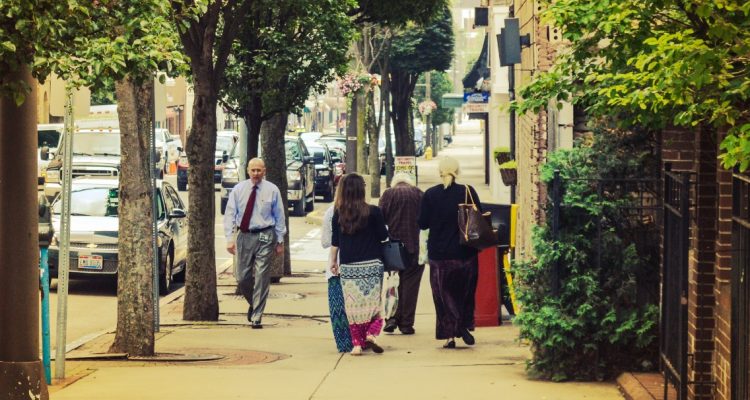Walkable?
What’s not walkable?
Downtown Wheeling? Not walkable?
But there are sidewalks and crosswalks and push-button “I-wanna-walk’ buttons at every intersection, and trekking to DiCarlo’s or Depasquales or Vagabond Kitchen or Subway or the Cheese Melt seems to be popular on fair-weather afternoons, so how is downtown Wheeling not walkable now?
“‘Walkability’ has become a buzz word that a lot of people are using now in conversations that involve transportation choice,” said Dougherty, the director of ReInvent Wheeling. “There are a lot people who now want to be able to walk down a street sidewalk and get your needs fulfilled by going into restaurants or stores. Those kinds of areas have a really strong social fabric because the people are interacting more with each other on the sidewalks instead of just driving by.
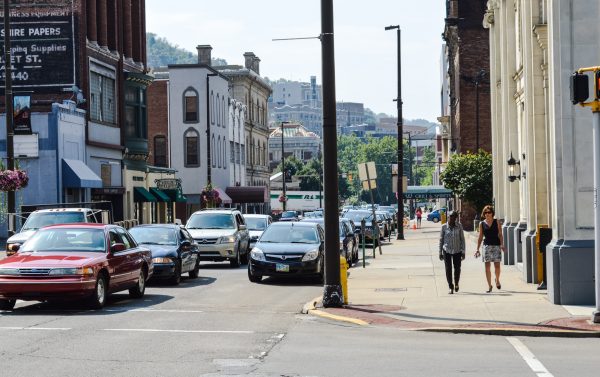
“The concept of ‘walkability’ is about a lot more than just having sidewalks and having the ability to use those sidewalks,” he continued. “It’s a social thing, yes, but it’s also an economic thing that I believe is very important to consider because the economic impacts of ‘walkability’ are very, very strong.”
And that’s because “window shopping” still takes place in America, but not often in downtown Wheeling.
“That’s something we don’t have much of because so many people choose to drive instead of walk,” Dougherty said. “When we are driving, we are going past those stores and restaurants too quickly to notice anything that may be new in their windows, and it’s been the same here in Wheeling since the 1950s, when suburbia was really getting more popular.
“We don’t have a lot of those connections taking place anywhere in Wheeling right now because our business areas have been set up for vehicles for a lot of years now. Right now we have the adequate infrastructure, but I also believe some changes could be made to improve the many environments that we do have here in Wheeling.”
Slowing the traffic, Dougherty explained, is one of several goals that he believes will improve revenue generation for downtown businesses and will increase the area’s level of safety for pedestrians and bicyclists.
“Our traffic flow in downtown Wheeling right now is flowing too fast for pedestrians to feel at ease while walking the district, and the way a lot of people make their turns at the intersections is very wide, and that involves pedestrian safety, too,” Dougherty said. “Slowing down the traffic is a change that I think should be made because it would be a great improvement.”
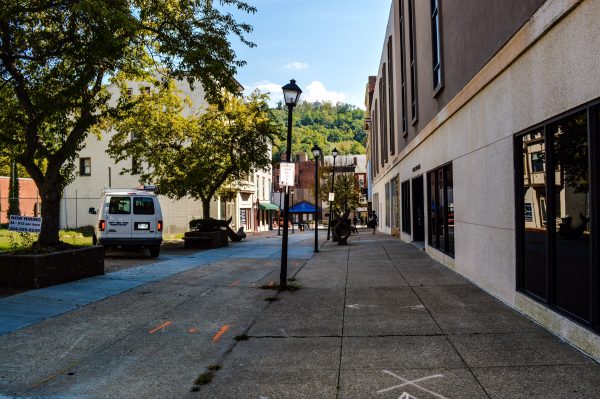
Another concentration Dougherty hopes will be adopted in the future involves the differences that exist between suburbs and urbanized downtown districts. Too often, he said, the goals for improving both such areas are intermingled and confused.
“We need to keep those two areas separate because they function differently. That’s why we need to quit trying to suburbanize our downtowns, and we need to stop trying to urbanize suburbia,” Dougherty said. “So when we think about the downtown, we have to ask ourselves how an urban environment thrives?
“If we had two-way traffic on Main and Markets streets in downtown Wheeling, each operating storefront would get twice the views from motorists, and that’s always good economically for those businesses. It would also encourage people to park their cars and walk,” he continued. “Right now in downtown Wheeling if someone who works on Market Street between 12th and 14th streets want to go to DiCarlo’s for lunch, most often they get in their cars and drive all the way up past Market Plaza to gain access to Main Street. That’s not a very efficient traffic design.”
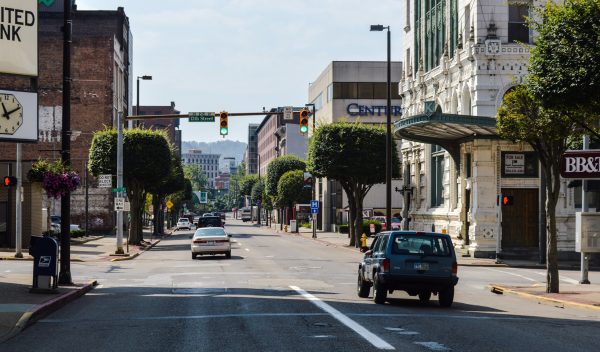
Main and Market streets? Two-Way Traffic?
Not only does Dougherty believe that two-way traffic on the pair of downtown throughways that supply W.Va. Route 2 – a state highway – passage through downtown Wheeling would be beneficial, but so does Glenn Elliott, the owner of the Professional Building and an announced candidate for mayor of Wheeling in 2016.
“As a downtown resident and building owner I have been thinking about the ‘walkability’ issue for some time now, and it is clear when you look at our downtown streets that they were designed with the primary intention centered on vehicular efficiency,” said Elliott. “That is not uncommon across the country because during the urban sprawl in the 1940s and ‘50s it was common for downtowns to have loops in them like we do in downtown Wheeling.
“The idea was to get the traffic from one end of the downtown to the other end to get you through it, but there’s nothing that encourages someone to drive to downtown, and there’s a big difference there,” he continued. “I think that is something we can take a hard look at, and creating more two-way streets is a good starting point in my opinion.
“As someone who walks his dog to Heritage Port almost daily, I can tell you that I have to make sure that he doesn’t go anywhere near the traffic because if he did, he would die instantly. It’s not just a theory, but it’s also fact that the downtown is designed for those cars and not for me and my dog, and I wonder why anyone would want a downtown that’s just for cars and trucks?”
Not many current Wheeling residents – if any – have ever driven north on Main Street or south on Market Street unless doing so illegally. An effort was made by the state of West Virginia in the late 1970s to construct a bypass for W.Va. Route 2 through the “Goosetown” part of East Wheeling, but the full scope did not come to fruition because of a lack of full funding. That is why the “ramps to nowhere” can still be seen in the area where the state highway connects to U.S. Interstate 70.
Elliott is well aware that local motorists have grown used to the longtime traffic patterns in downtown Wheeling, and he also realizes the state’s Division of Highways may also have a difficult time digesting the two-way suggestion for Main and Market.
“I know it would require some cooperation with the Division of Highways to make that change for Main and Market streets, but most often when government organizations conduct studies concerning these issues, they are always traffic studies done by traffic engineers who are always more concerned with just traffic,” Elliott said. “If that is the basis by which they look at downtown Wheeling, then it will only put us right back to where we are today. But redesigning the downtown in a way that it’s based on people and not just the motorists would not take much effort or rack up any significant costs.
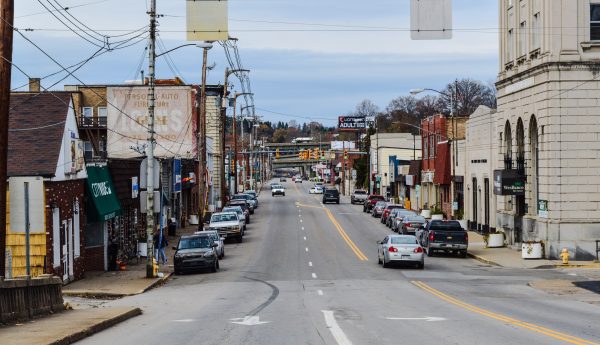
“If they can take their perspective away from the flow of cars and concentrate on the pedestrians and the bicyclists, then we could realize improvement in the downtown and in other areas like the main business district in Elm Grove,” he said. “If you’re visiting that Elm Grove area, where businesses line both sides of National Road, you probably aren’t going to try to cross that street to visit a business on the opposite side, and that’s because it’s not very accessible to the people on foot after they find a parking space.”
Dougherty reported that he believes state road officials are already familiar with the two-way premise, and that’s because Wheeling is not the only municipality in West Virginia making such traffic-flow requests.
“They are listening to what we have to say because there are other cities looking into the same issues and asking them the same questions about those issues,” Dougherty said. “The process is very important, and getting the community involved with that process is essential. It makes sense when people actually talk about it, so we need to engage as many people as possible.
“And thanks to our ‘Local Places, Local Foods’ initiative, we are having a conversation with the folks with the Federal Highways Administration right now that involves transportation and mobility. We are working with them to take a good look at our downtown with pedestrian accessibility and bike-ability in mind,” Dougherty explained. “It’s all about transportation choice, and they have been very helpful.”
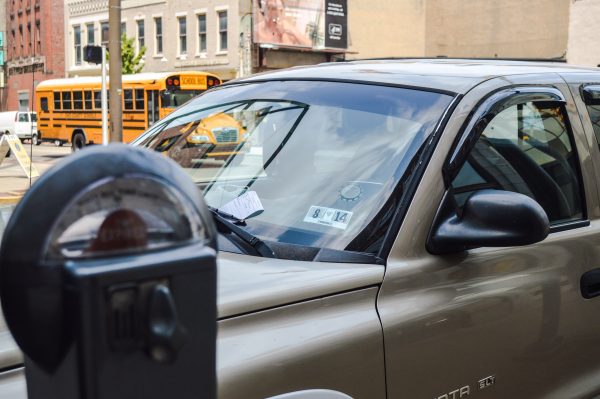
The Problem with Parking
Employees of businesses located in downtown Wheeling feed the parking meters during their workdays, and the parade of people can be witnessed between 10 a.m.-4:30 p.m. near the City-County Building, along Market Street between 10th and 16th streets, and along Main Street between 14th and 16th streets.
One after another, quarter after quarter, and that’s why there is zero turnover that takes place with many of those parking spaces, and receiving a parking ticket is not an expensive ordeal either.
“If you stand out in front of the Professional Building on any given business day, you will see a lot of downtown tenants and employees feed those meters all day, and I guarantee that that’s a problems for those businesses in that area,” Elliott said. “I know people who take the $3 parking ticket every day, and they go pay them off at the end of the week. It’s the same cost for them as if they parked in one of the garages, so why would they do anything differently?
“They are no financial disincentives for them, so they just leave their cars there all day long,” he continued. “So that’s what they do day after day, and anyone who walks along Market Street can see it take place every single business day.”
“I believe we have an inefficient parking system in the downtown, and that’s because, while we have great deck parking in the district, so many people instead choose to park as close to their workplace as possible and feed the meter all day,” Dougherty said. “What would be great to see in downtown Wheeling is an increase in the number of parking tickets and the time of stay reduced because if we can encourage people to stay in that parking spot for only two hours, then people would only park in those spaces when they needed to do business in that area. If that were to happen, we would see our downtown businesses do better, and we would have a better parking situation.”
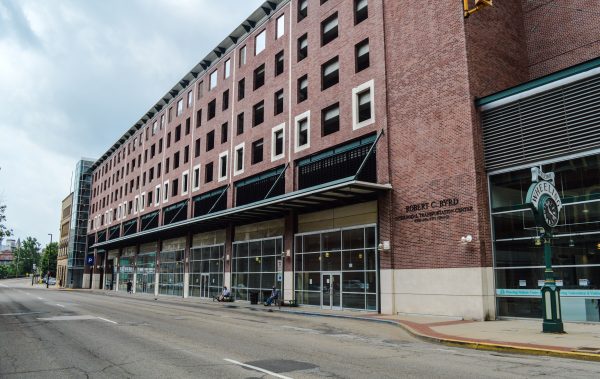
These issues are not unique to Wheeling, and that is why cities across the country have commissioned studies to project what improvements could take place that could promote the increase in “social capital.” According to the American Journal of Public Health, “social capital” is an umbrella term that measures things like involvement in local government and community trust. Greater social capital has been linked with better community health, decreased crime rates, and also increased economic activity.
The Journal also reported that, “…by regularly walking in their communities, residents will also interact more frequently with their neighbors creating a denser community network which can increase individual peace of mind, community trust, and may decrease crime rates.”
“There are many cities across the country where these walking issues exist, but when I look at cities that have made the changes, I see economic growth,” Dougherty said. “I don’t think it’s an issue where people don’t want to walk anymore, but instead I believe it’s been this way for so long in downtown Wheeling that people are now trained to think that they have to park right out front of a business they want to go into.
“Walking a downtown has to feel comfortable for people to do it, and there are ways to make the streets more inviting. If it becomes more inviting, we’ll see more people willing to walk from one end of the other. That’s just not the case right now,” he added. “The fabric of a community is vital when you are trying to have a vibrant downtown, and improving access for pedestrians is an important part of that. It’s the collisions of people that ultimately inspire new ideas.”
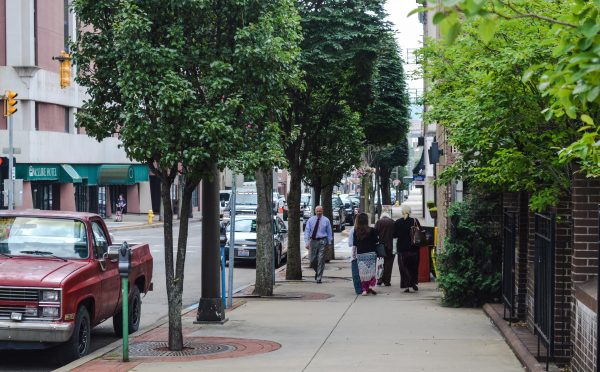
(Photos by Steve Novotney)


